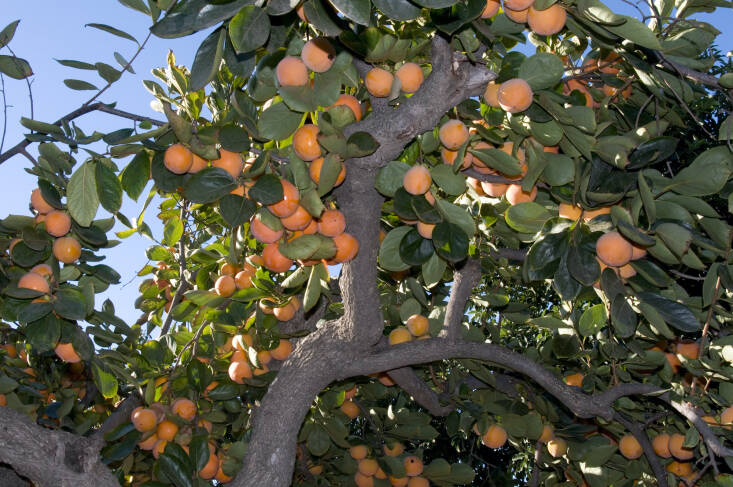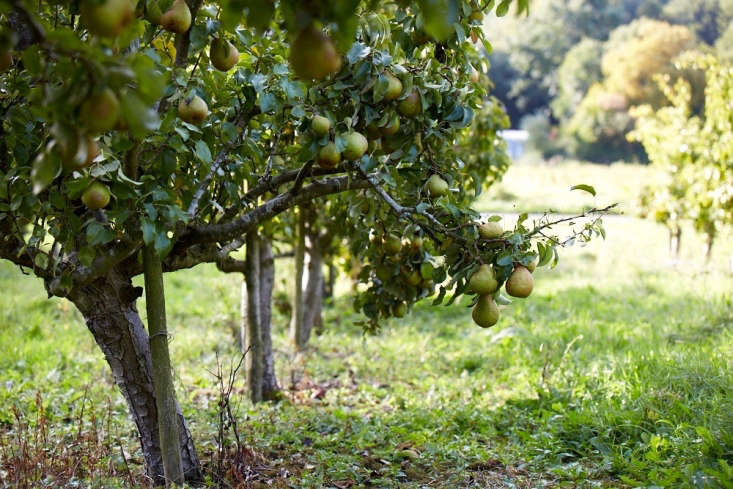We’ve entered the season when our gardens are starting to gradually slow down in preparation for a restful winter. We gardeners, however, can’t help but keep on pruning, planting, and planning. One project to add to your list of late-fall chores to do in the garden: plant a fruit tree.
And if you do, consider going with a dormant bare-root fruit tree. Planting bare-root trees saves not only money (it’s always cheaper to buy bare-root over container-grown), but also your back from having to lug around heavy nursery pots.
Here are my tips for planting bare-root fruit trees:
1. Take stock of the stock.
Above: Photograph via Hopes Grove Nurseries.
When choosing which bare-root fruit tree to buy, look for ones that are shorter and with thicker trunks. Taller trees with thinner trunks might not be as hardy and stable in the ground. After planting, your tree’s canopy should be pruned anyway to even out the weight so that your tree’s top (canopy) is in proportion to its smaller bottom (roots).
2. Don’t procrastinate about planting.
Bare-root fruit trees are—surprise, surprise—bare, so that means no soil protects the delicate roots. What this also means is that the exposed roots can dry out quickly. The solution? Plant your tree as soon as you get it home. The other option is to “heel it in” which means that you bury the roots in some sort of moist material for a short time until you can plant it. Some bare-root plants come in plastic packaging with moist sawdust already around the roots, which can help protect the roots and give you a little more time before planting.
3. Soak and soak some more.
 Above: Fuyu persimmons are the best-selling fruit tree at Dave Wilson Nursery, which sells it in bare-root form.
Above: Fuyu persimmons are the best-selling fruit tree at Dave Wilson Nursery, which sells it in bare-root form.
Before planting your bare-root tree, carefully untangle any roots and soak in water for at least two hours to rehydrate it. Once that is complete, mix organic compost into to your native soil for in-ground planting. No fertilizer is needed upon planting. For containers, look for organic potting soil without fertilizers because harsh chemicals could harm young trees.
4. Measure the roots.
Many gardeners wonder how to plant a tree that has only dangly roots and no defined root ball. Well, start by digging a hole two to three times as wide as the roots and only as deep as the longest root. Too deep of a hole and the soil and tree will settle too much. Mound up a bit of soil in the hole and spread out the roots then back fill and gently press down the soil to remove any air pockets. Pro tip: Make sure the graft union (if present) stays above the final soil level.
5. Mulch generously.
After planting and watering deeply, apply a thick layer of mulch around your tree. Mulch will help maintain even moisture and help prevent weeds. But don’t crowd the trunk with mulch (mulch volcanos lead to excess moisture on the bark, which can lead to rot).
6. Practice patience.
 Above: Photograph by Britt Willoughby Dyer, from Gardening 101: Pear Trees.
Above: Photograph by Britt Willoughby Dyer, from Gardening 101: Pear Trees.
It’s normal to want to immediately reap the fruits of your labor, but recognize that bare-root fruit trees can be slower to produce at first as the roots get established. Be patient and you will be rewarded: some even say bare-root trees end up growing larger than their container counterparts. Expect at least a year or two before getting a harvest. Then enjoy!
See also:



